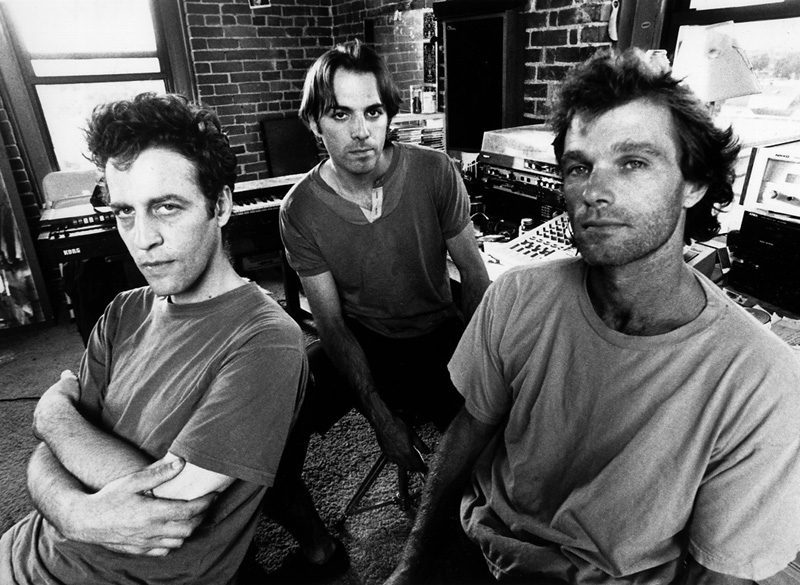FLASHBACK FRIDAY: Morphine – “Cure For Pain”

Mark Sandman, bass player and vocalist of Boston three-piece Morphine, died a classic rock star death: while performing in Palestrina, Italy in July of 1999, he suddenly collapsed, and succumbed almost immediately to cardiac arrest. Sandman had felt fine the day of the show, aside from stress and temperatures nearing a hundred degrees Fahrenheit, and afterwards, his Jewish parents declined an autopsy in accordance with religious law as stated in the Talmud, so the cause of his death remains a mystery. Speculation ran—rock star deaths being rock star deaths, after all, though Morphine never gained quite enough recognition to make them out-and-out famous—that drugs had played a part, but that story didn’t add up: no one present reported seeing Sandman smoking anything stronger than cigarettes on the day he died, and he hadn’t been associated with drug use at any previous point in his career. Then again, there was the group’s name, and their best-known album, Cure For Pain. If this murky, masterfully depressive 1993 release doesn’t suggest the haze and isolation of drug use, then damned if I know what does.
A no-nonsense trio of drums, sax and two-string slide bass, the group emerged as a kind of seductive, uncanny mash of jazz and nineties alternative rock. Morphine put out five albums from 1992 to 2000; Cure For Pain was their second, and far and away their best. It has loud, angry songs—dizzy and rollicking like “Buena” and “Mary Won’t You Call My Name”–and it has moody, atmospheric songs, like “Miles Davis’ Funeral.” All of them cuttingly bleak, though not alienating. In lesser hands, the lyrics would come across overblown, but carried by Sandman’s hypnotic voice, lines such as one lyric that occurs in the title track (Someday there’ll be a cure for pain/That’s the day I throw my drugs away), are as essential as any of the instruments. The odd musical assembly the band was working with meant that they only had so many kinds of songs they could write, but on this album, the possibilities seem infinite.
Mark Sandman’s death may have kept Morphine from real stardom. The band disintegrated quickly after his death. It seems to me, though, that even at the height of its powers, the group was bound for obscurity. Not because they sounded too strange or unpalateable—far freakier bands have played on MTV—but because no story Morphine tells is ever very simple. The songs often change halfway through. The music suddenly becomes bogged down in a swampy sax line or, just as suddenly, maniacally loud and fast. It often demands the ability to dramatically switch moods in an instant. It is ugly when it has to be.
Without the promise of ever finding out exactly what caused Mark Sandman’s death, many fans lost interest in the band. Were his story more legend-friendly, and had the band been active since the Internet took over the world, Morphine would certainly have received more general acclaim. Though the four other albums Morphine put out in the nineties are immensely solid, Cure For Pain reigns supreme. There’s simply not a bad track on the album. In fact, there isn’t a track that isn’t great on the album.
In Cure For Pain, the dominant mood—overwhelming melancholy—gets so heavy that it can be difficult to listen to. There is a pleasing parallel between the band’s name and the effect of the music. Ditto the frontman’s name and his singing: the Sandman of folklore, who sprinkles magical dust on sleeping children’s eyes to bring on good dreams, makes for a close metaphor of Mark Sandman’s warm and lullaby-like vocal style. The bit about the magic dust rings true as well. Sandman seemed to live and play with precision, as if remaking himself into a musical character, a slight intorsion of the rock star myth.
[fusion_builder_container hundred_percent=”yes” overflow=”visible”][fusion_builder_row][fusion_builder_column type=”1_1″ background_position=”left top” background_color=”” border_size=”” border_color=”” border_style=”solid” spacing=”yes” background_image=”” background_repeat=”no-repeat” padding=”” margin_top=”0px” margin_bottom=”0px” class=”” id=”” animation_type=”” animation_speed=”0.3″ animation_direction=”left” hide_on_mobile=”no” center_content=”no” min_height=”none”] [retweet][/fusion_builder_column][/fusion_builder_row][/fusion_builder_container]





